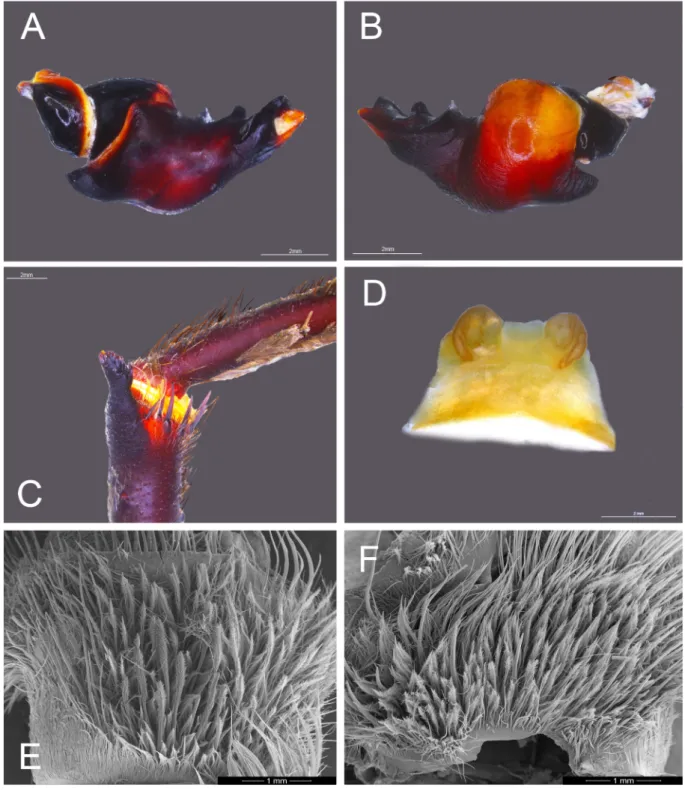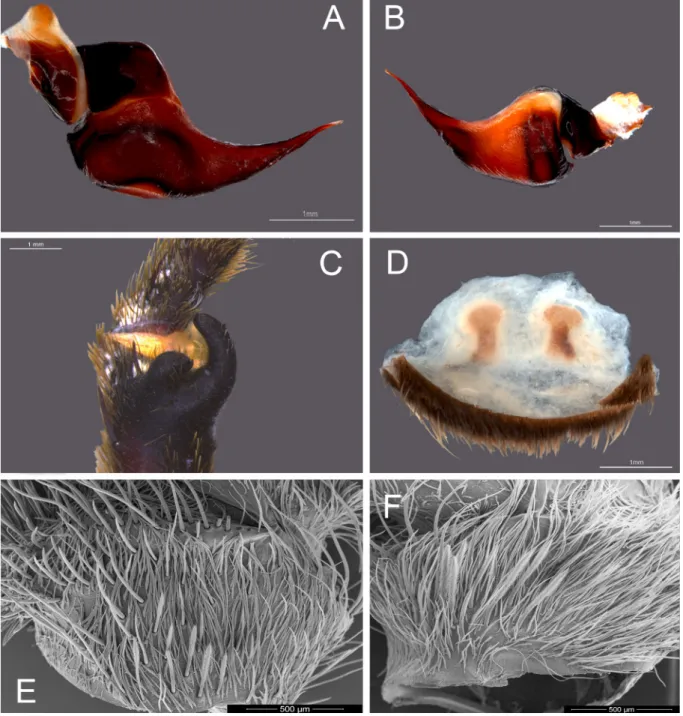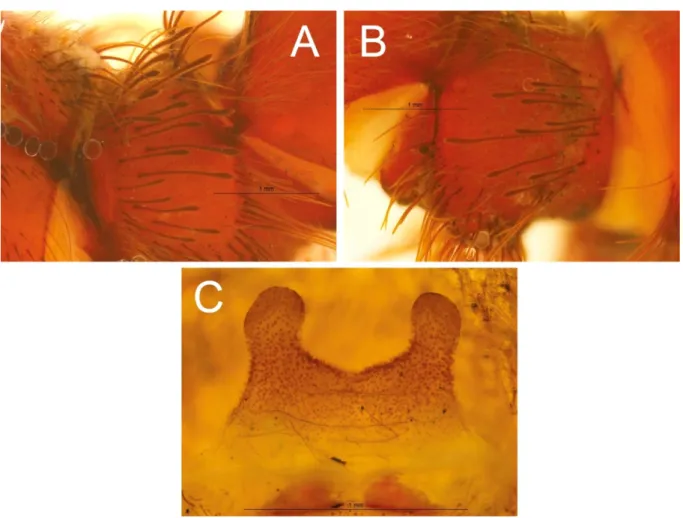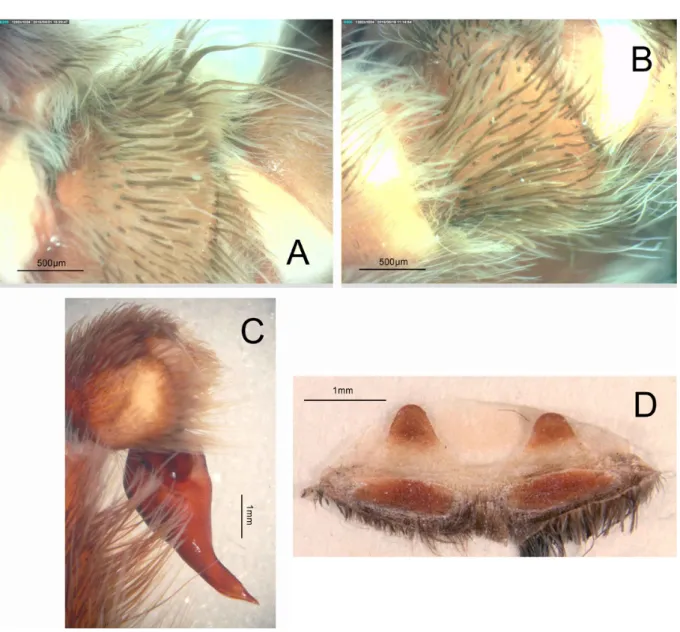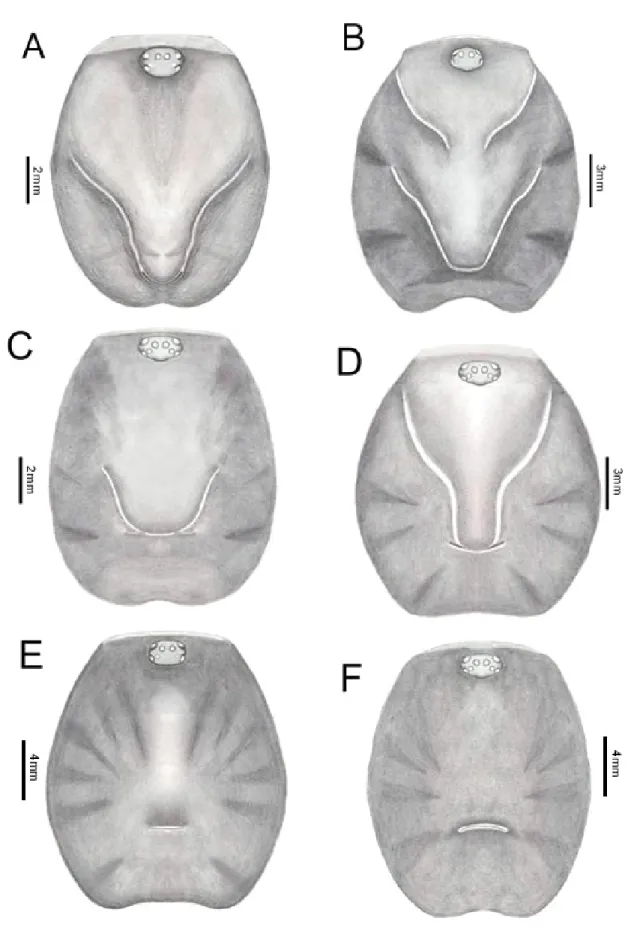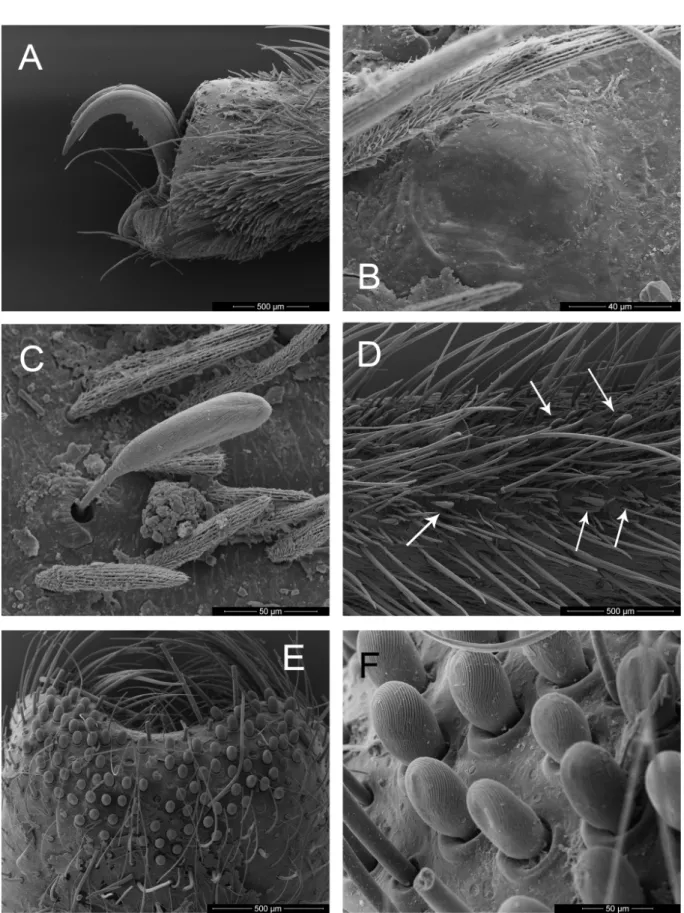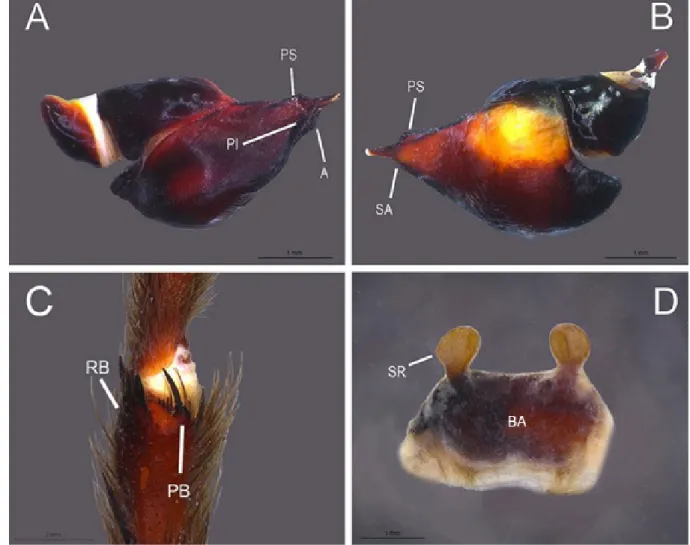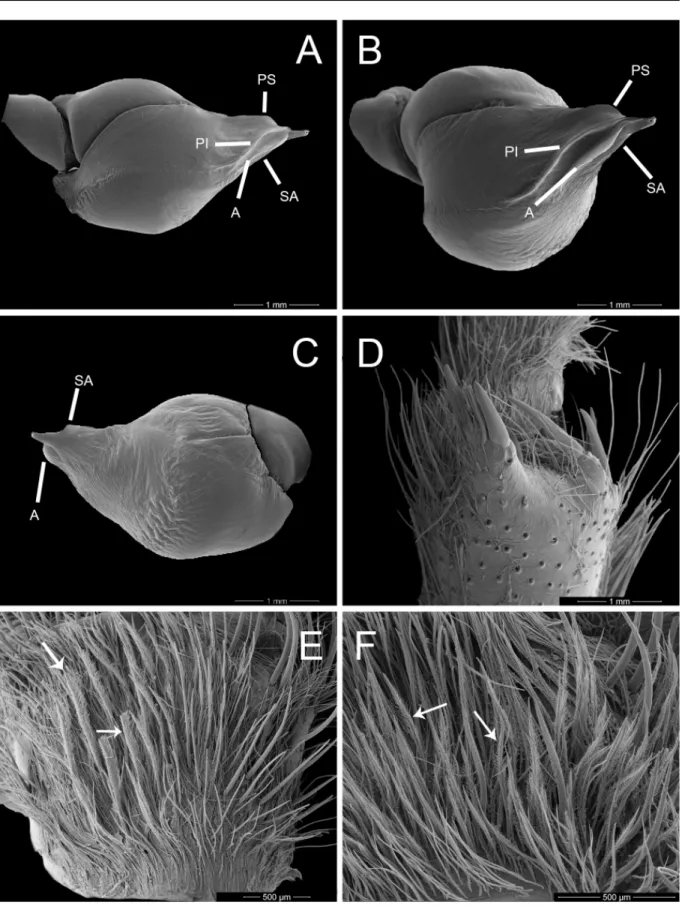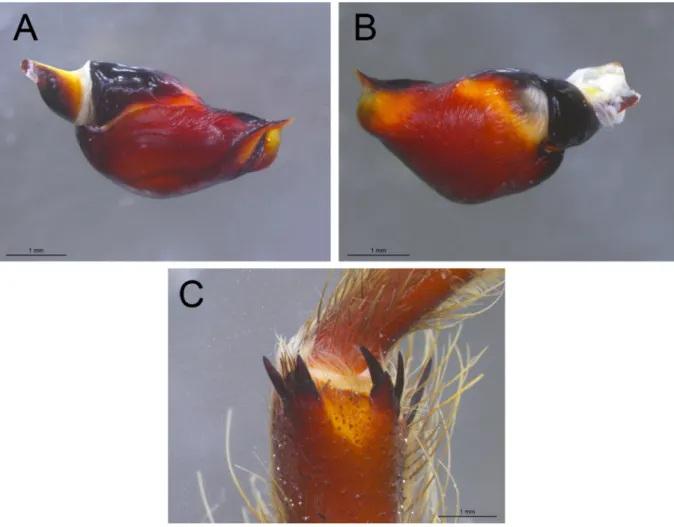https://doi.org/10.5852/ejt.2018.457 www.europeanjournaloftaxonomy.eu 2018 · Gargiulo F. de F. et al.
This work is licensed under a Creative Commons Attribution 3.0 License.
M o n o g r a p h
urn:lsid:zoobank.org:pub:90509851-4A60-4A51-8D39-64457010B6EE
Umbyquyra gen. nov., a new tarantula spider genus from the Neotropical region (Araneae, Mygalomorphae, Theraphosidae),
with a description of eight new species
Fabio de F. GARGIULO
1, Antonio D. BRESCOVIT
2,*& Sylvia M. LUCAS
31,2,3
Laboratório Especial de Coleções Zoológicas, Instituto Butantan, Av. Vital Brasil, 1500, São Paulo, Brazil.
*
Corresponding author: antonio.brescovit@butantan.gov.br
1
Email: fabiofgargiulo@gmail.com
3
Email: sylvia.lucas@butantan.gov.br
1
urn:lsid:zoobank.org:author:7DDF3C5C-ABDD-4B85-9B8E-0B4EF8B689EC
2
urn:lsid:zoobank.org:author:D5B81D79-AFAE-47B1-8A6E-DAB448A24BCC
3
